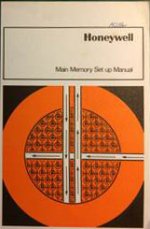durgadas311
Veteran Member
I did some work on punch card data processing equipment, although not the 129 Keypunch machine. You can see that here: http://sims.durgadas.com/punchcards/ibm029.html
| VCF West | Aug 01 - 02 2025, | CHM, Mountain View, CA |
| VCF Midwest | Sep 13 - 14 2025, | Schaumburg, IL |
| VCF Montreal | Jan 24 - 25, 2026, | RMC Saint Jean, Montreal, Canada |
| VCF SoCal | Feb 14 - 15, 2026, | Hotel Fera, Orange CA |
| VCF Southwest | May 29 - 31, 2026, | Westin Dallas Fort Worth Airport |
| VCF Southeast | June, 2026 | Atlanta, GA |
I have setup a project page for my effort. http://honeywell2000.durgadas.com/ There is a download page linked from there where you can get the "jar" file for the virtual H2000. I'm still hoping to find folks that can help, with either more details on how the machines operated or with code to run.

The problem with "Billion Dollar Brain" is that the key scene portrays cards being read into a model 223 card reader. Okay, so maybe building a 223 from scratch may be within someone's capabilities, but finding a supply of punched cards could prove more difficult. Anyway, there seems to be a misconception that the H200 was the billion dollar brain in the title, but it clearly wasn't. Apart from being a free-standing small mainframe in its own right the H200 was also used as a satellite machine for far larger ones, which is why it was designed with such versatile peripheral capabilities. The scenes in that film evidently portray such a set-up.
Yeah, I got that impression watching the scene with Karl Malden. From what I could follow, he was doing little more than printing out a message from a mag tape, possibly after decrypting it - which was probably all local to the H200... not that there was actually a "billion dollar brain" attached to the H200...
I'm currently putting together a test circuit to determine the precise operating characteristics of the Honeywell flip-flop ICs that I will be using in the control memory so that I can design the PCBs for it. Sixteen identical PCBs with gold-plated edge connectors will cost a fair bit for my supplier to manufacture, so I need to get the design right. I know the basic logic functions of the ICs but also need to assess the fan-out and line driving capabilities as well as the effect of the feedback capacitors that Honeywell included in their designs. I noticed that in older designs they were included but in later versions of the same boards some were omitted, so there seems to have been some lack of clarity about when they were really needed. Modern digital ICs don't have analogue feedback pins to permit wave-shaping adjustments, so design with them is much simpler, but these ICs were used in circuits on wire-wrapped backplanes with long interconnecting wires and plenty of scope for induced noise.
I'm guessing the parts are RTL/DTL ICs then? I never worked with that technology, but saw some in the Wang 600/700 programmable calculators. I didn't realize you could still get those parts, or is this recycled chips? Anyway, kudos to having the courage to work in that space! I saw some wire-wrap backplanes (newer tech) that used twisted-pair wiring... did Honeywell use any of that to reduce noise?
Gosh, it's now a year since I last posted to this thread. I'm so busy working on this project that I haven't even found the time to update my website for it either, but rest assured that I am making significant progress daily at present and the enterprise is in good health. I'll try to give more details but don't have time today now, having just written a lengthy post about wire-wrapping in another thread.
I'll be back.
